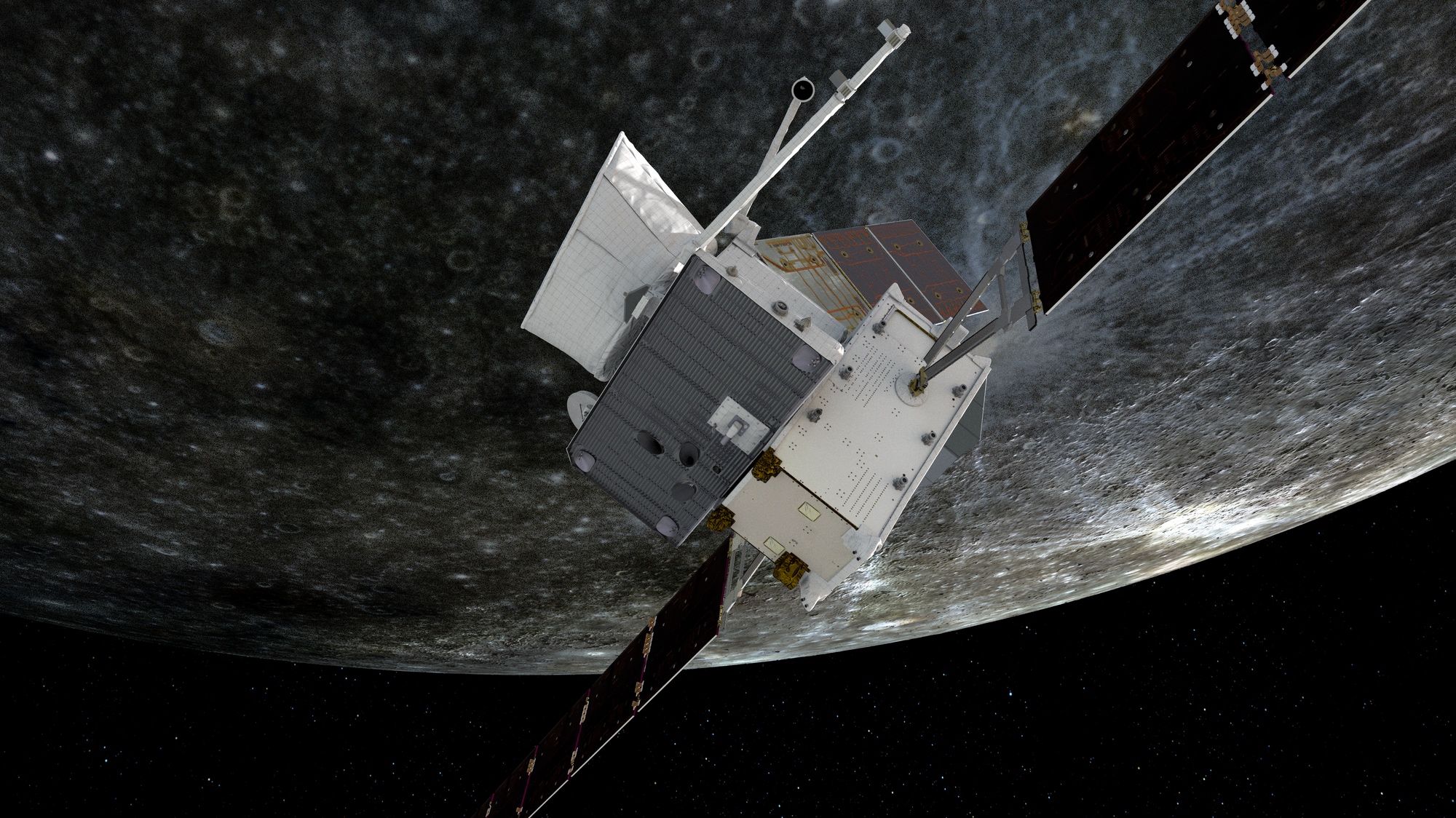Products You May Like
WASHINGTON — The European Space Agency is adjusting the trajectory of its BepiColombo mission to Mercury, delaying its insertion into orbit around the innermost planet by nearly a year to compensate for reduced performance from its electric thrusters.
ESA announced Sept. 2 that the spacecraft, a joint mission with the Japanese space agency JAXA that launched in 2018 and since made several flybys of the Earth, Venus and Mercury, will take a slightly different trajectory during its next flyby of Mercury on Sept. 4. The spacecraft will pass just 165 kilometers from Mercury’s on this flyby, 35 kilometers closer than previously planned.
The change is part of a revised trajectory for the mission after ESA discovered a problem with the spacecraft’s thrusters in April. When controllers turned on the thrusters then for a maneuver, they found that the thrusters were not getting enough power. Engineers were able to restore the thrusters to 90% of their original thrust, but that was not enough for maneuvers needed to get the spacecraft into orbit around Mercury in December 2025.
An investigation found what ESA called “unexpected electric currents” between solar arrays on one part of BepiColombo, the Mercury Transfer Module (MTM), and a power distribution unit. Those currents reduced the power available for the electric thrusters and prevent the mission from carrying out its original trajectory.
“Following months of investigations, we have concluded that MTM’s electric thrusters will remain operating below the minimum thrust required for an insertion into orbit around Mercury in December 2025,” Santa Martinez, BepiColombo mission manager at ESA, said in a statement.
The mission developed an alternative mission profile that retains the upcoming flyby, the fourth of six planned for the mission, and the following two in December and January. The spacecraft will fly a different trajectory to compensate for the reduced thrust, though, delaying its arrival into orbit from December 2025 to November 2026.
While BepiColombo will go into orbit 11 months later than planned, ESA said the change won’t affect overall mission science. During the upcoming flyby 10 of the spacecraft’s instruments will collect data, allowing science teams to test the performance of those instruments while also collecting data from regions of the planet and the magnetosphere that won’t be studied once the spacecraft is in orbit.
“We get to fly our world-class science laboratory through diverse and unexplored parts of Mercury’s environment that we won’t have access to once in orbit, while also getting a head start on preparations to make sure we will transition into the main science mission as quickly and smoothly as possible,” said the mission’s project scientist, Johannes Benkhoff, in a statement.
BepiColombo’s main camera will not operate during the flyby since its view is blocked while in cruise mode. However, three engineering cameras will take images of Mercury during the flyby, including the first views of the planet’s south pole.
